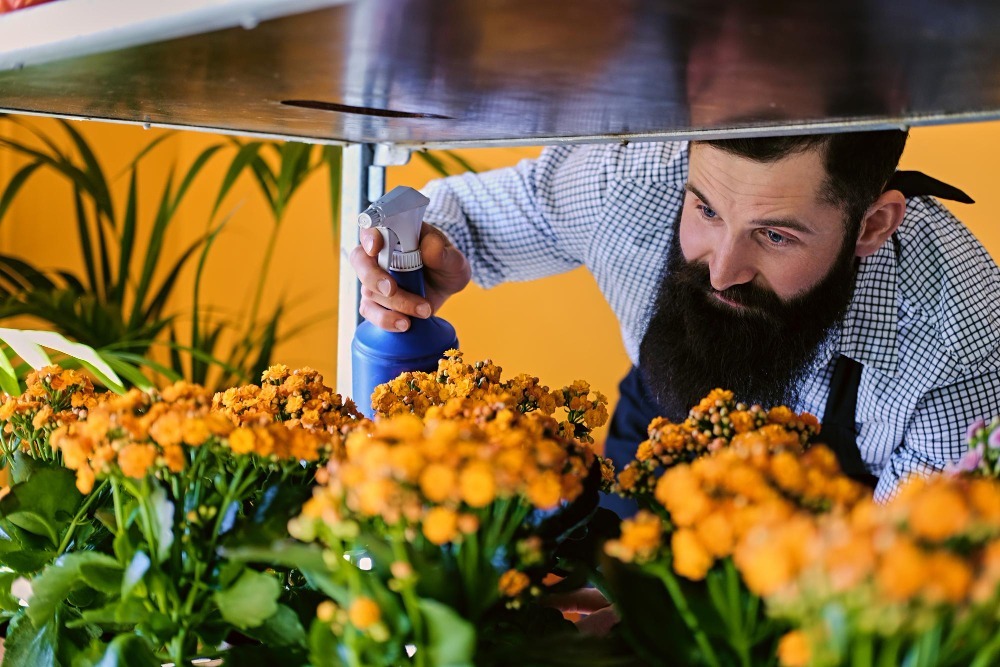Gardens thrive when pollinators like bees, butterflies, and hummingbirds visit regularly. These creatures play a vital role in plant reproduction, ensuring abundant blooms and bountiful harvests. According to research, “Pollinators contribute to the reproduction of 75% of flowering plants globally.”
Pollinators
Pollinators are animals that assist in the transfer of pollen from the male part (anther) to the female part (stigma) of flowers, enabling fertilization and subsequent seed and fruit production in plants. They include insects like bees, butterflies, moths, beetles, and flies, as well as some birds and mammals.
Importance of Pollinators
Pollinators are crucial for both natural ecosystems and agricultural productivity. “In the United States alone, pollinators like bees contribute over $15 billion to crop production annually.” By attracting them to your garden, you not only support biodiversity but also increase your garden’s productivity.
Choosing Pollinator-Friendly Plants
Selecting the right plants is key to attracting pollinators. Opt for a variety of native flowers and herbs known for their appeal to pollinators. “Plants such as lavender, sunflowers, and native wildflowers are particularly attractive to bees and butterflies.”
Creating a Pollinator-Friendly Habitat
Pollinators need more than just nectar-rich plants. Provide shelter and nesting sites by incorporating features like “bee hotels” and brush piles. “A diverse habitat encourages different pollinator species to visit and thrive in your garden.”
Avoiding Chemical Pesticides
Chemical pesticides can harm pollinators. Opt for organic pest control methods such as “companion planting” and “biological controls” to manage pests without endangering beneficial insects. “Studies show that pesticide exposure contributes to pollinator declines worldwide.”
Providing Water Sources
Pollinators need water for hydration and regulating their body temperature. Set up shallow dishes with pebbles or small floating platforms in your garden. “A reliable water source can attract and retain pollinators in your garden throughout the season.”
Seasonal Garden Maintenance
Maintain a continuous bloom from spring to fall by planting flowers that bloom at different times. “Succession planting ensures a steady food supply for pollinators throughout the growing season.” Regularly deadhead spent flowers to encourage new blooms.
Observing and Monitoring Pollinators
Take time to observe pollinators in action. “Documenting pollinator visits can help you track their preferences and adjust your garden accordingly.” Consider participating in citizen science projects to contribute valuable data on pollinator populations.
Here are some interesting facts about pollinators and gardening
- Busy Bees: Bees are one of the most important pollinators, responsible for pollinating over 80% of flowering plants worldwide.
- Butterfly Effect: Butterflies taste with their feet and are attracted to bright colors like red, yellow, and purple.
- Hummingbird Heroes: Hummingbirds can flap their wings up to 80 times per second and are crucial pollinators for many tropical plants.
- Bat Benefits: Bats are nocturnal pollinators known for their role in pollinating plants like agave, which is used to make tequila.
- Global Impact: Pollinators contribute to an estimated $24 billion annually to the U.S. economy through their role in crop production.
- Diverse Diet: Some pollinators, like beetles, prefer to feed on plants with strong odors or rotting smells, such as certain species of orchids.
- Tiny Yet Mighty: Many native bees are solitary and live underground or in small tunnels, contributing significantly to crop pollination.
- Vanishing Act: Pollinators worldwide face threats from habitat loss, pesticide use, climate change, and diseases, impacting food security.
- Symbiotic Relationships: Plants and pollinators have evolved together over millions of years, each depending on the other for survival and reproduction.
- Citizen Science: Programs like citizen science initiatives help track pollinator populations and support conservation efforts globally.
FAQs
- Why are pollinators important for my garden?
Pollinators like bees, butterflies, and hummingbirds play a crucial role in fertilizing flowers, leading to fruit and seed production in many plants. They enhance biodiversity and contribute to a healthy ecosystem.
- How can I attract bees to my garden?
Planting native flowers rich in nectar and pollen, providing a water source, and avoiding pesticide use are effective ways to attract bees. Creating a variety of flower shapes and colors also helps.
- What are some plants that attract butterflies?
Butterflies are attracted to nectar-rich flowers such as milkweed, butterfly bush, coneflower, and verbena. They also prefer sunny locations with shelter from wind.
- How do I attract hummingbirds to my garden?
Hummingbirds are drawn to red, tubular-shaped flowers with nectar. Plants like bee balm, trumpet vine, salvia, and cardinal flower are favorites. Providing perches and water sources can also help.
- What role do pollinators play in food production?
Pollinators are essential for the reproduction of many fruits, vegetables, and nuts. Without them, crops like apples, almonds, and blueberries would be severely impacted.
- How can I create a pollinator-friendly garden?
Besides planting pollinator-attracting flowers, consider providing nesting sites for bees, reducing or eliminating pesticide use, and planting flowers that bloom throughout the seasons to provide a continuous food source.
- What are some natural ways to boost pollination in my garden?
Aside from attracting pollinators, techniques like hand-pollination (using a small brush to transfer pollen between flowers), companion planting to attract beneficial insects, and mulching to retain moisture and improve soil health can enhance pollination.
- What are the risks to pollinators and how can I protect them?
Pollinators face threats from habitat loss, pesticide exposure, diseases, and climate change. To protect them, plant native species, avoid chemical pesticides, provide water sources, and support conservation efforts in your community.
- Can I attract pollinators even in a small urban garden?
Yes, you can! Even small spaces like balconies or rooftops can attract pollinators by planting containers with pollinator-friendly flowers and herbs. Choose plants that thrive in containers and provide nectar and pollen.
- How do I identify different pollinators in my garden?
Identifying pollinators can be exciting and educational. Bees vary in size and color, while butterflies have distinct wing patterns and colors. Hummingbirds are easily recognizable by their small size and rapid wing beats.
- What should I do if I see a decline in pollinator activity in my garden?
Assess your garden for factors like pesticide use, lack of diverse flowering plants, or environmental stressors. Enhance biodiversity, plant more flowers, and create habitats like bee houses or butterfly puddling areas to support pollinators.
- Are there specific times of day when pollinators are more active?
Yes, most pollinators are more active during daylight hours, especially in the morning and late afternoon. Plan your garden visits and observations during these times to maximize your chances of spotting them in action.
Conclusion
Creating a pollinator-friendly garden enhances biodiversity and boosts crop yields naturally. By nurturing bees, butterflies, and other pollinators, you not only improve your garden but also contribute to environmental sustainability. Embrace these practices for a thriving, eco-friendly outdoor space.


